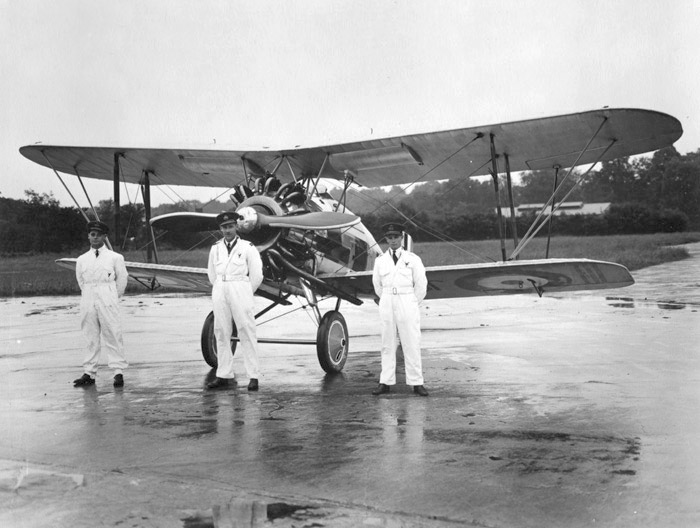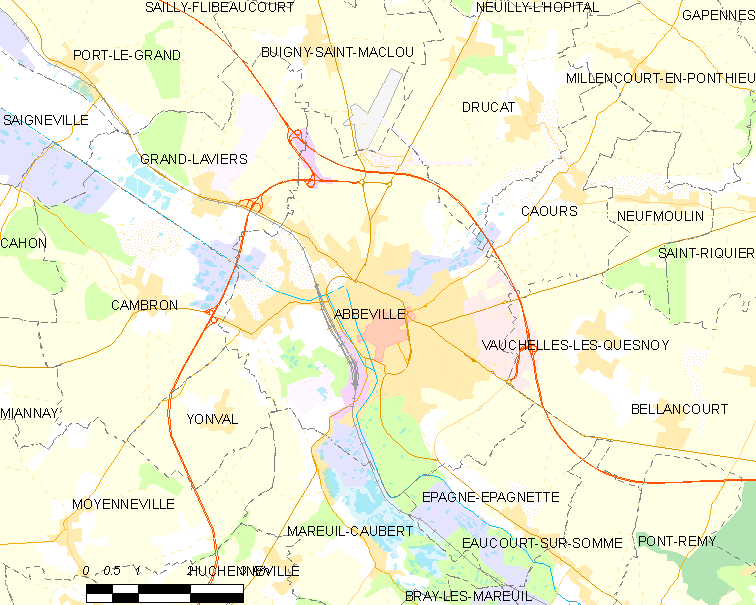|
Willie McKnight
William Lidstone McKnight, (18 November 1918 – 12 January 1941) was a Canadian aviator and flying ace of the Second World War. He was Canada's fifth-highest scoring ace of the war. McKnight joined the Royal Air Force (RAF) in early 1939 and served in No. 242 Squadron RAF during the final phase of the Battle of France, covering the Allied retreat from Brittany, and later the Battle of Britain. McKnight's aircraft wore a distinct cartoon of a jackboot kicking Adolf Hitler on the port side of the engine cowling. His Hurricane also carried a human skeleton image which held a sickle in its hand under the cockpit, on both sides of the aircraft. McKnight scored 17 victories, as well as two shared and three unconfirmed kills. McKnight was shot down and killed on 12 January 1941 during a fighter sweep over Calais.Holmes 1998, p. 124. Early years William Lidstone "Willie" McKnight was born in Edmonton, Alberta, Canada on 18 November 1918 and grew up in Calgary. He was considered a bit ... [...More Info...] [...Related Items...] OR: [Wikipedia] [Google] [Baidu] |
Edmonton
Edmonton ( ) is the capital city of the Canadian province of Alberta. Edmonton is situated on the North Saskatchewan River and is the centre of the Edmonton Metropolitan Region, which is surrounded by Alberta's central region. The city anchors the north end of what Statistics Canada defines as the " Calgary–Edmonton Corridor". As of 2021, Edmonton had a city population of 1,010,899 and a metropolitan population of 1,418,118, making it the fifth-largest city and sixth-largest metropolitan area (CMA) in Canada. Edmonton is North America's northernmost large city and metropolitan area comprising over one million people each. A resident of Edmonton is known as an ''Edmontonian''. Edmonton's historic growth has been facilitated through the absorption of five adjacent urban municipalities ( Strathcona, North Edmonton, West Edmonton, Beverly and Jasper Place) hus Edmonton is said to be a combination of two cities, two towns and two villages./ref> in addition to a series ... [...More Info...] [...Related Items...] OR: [Wikipedia] [Google] [Baidu] |
RAF Church Fenton
Royal Air Force Church Fenton or RAF Church Fenton was a former Royal Air Force (RAF) station located south east of Tadcaster, North Yorkshire, England and north west of Selby, North Yorkshire, near the village of Church Fenton. The station was opened in 1937 and during the Second World War was home to air defence aircraft, a role retained by the station until the 1960s when it became a training station. It closed in 2013 and is now a civilian airfield known as Leeds East Airport. History Prewar Plans for a new airfield adjacent to the village of Church Fenton were announced in June 1935, it was subject to protest from the local population particularly concerning the waste of valuable farming land and was close to an existing airfield away at Sherburn. Despite the protests construction started in early 1936 on the site, a mixture of private and West Riding County Council-owned farm land. On 1 April 1937 the station was declared open and on 19 April the first station c ... [...More Info...] [...Related Items...] OR: [Wikipedia] [Google] [Baidu] |
Messerschmitt Bf 110
The Messerschmitt Bf 110, often known unofficially as the Me 110,Because it was built before ''Bayerische Flugzeugwerke'' became Messerschmitt AG in July 1938, the Bf 110 was never officially given the designation Me 110. is a twin-engine (Destroyer, heavy fighter), fighter-bomber (''Jagdbomber'' or ''Jabo''), and night fighter (''Nachtjäger'') developed in Nazi Germany in the 1930s and used by the Luftwaffe during World War II. Hermann Göring was a proponent of the Bf 110, believing its heavy armament, speed, and range would make the Bf 110 the Luftwaffe’s premier offensive fighter. Early variants were armed with two MG FF 20 mm cannon, four 7.92 mm (.312 in) MG 17 machine guns, and one 7.92 mm (.312 in) MG 15 machine gun for defence (later variants would replace the MG FFs with MG 151s and the rear gunner station would be armed with the twin-barreled MG 81Z). Development work on an improved type to replace the Bf 110 - the Messerschmitt Me 210 - began be ... [...More Info...] [...Related Items...] OR: [Wikipedia] [Google] [Baidu] |
RAF Duxford
Duxford Aerodrome is located south of Cambridge, within the civil parish of Duxford, Cambridgeshire, England and nearly west of the village. The airfield is owned by the Imperial War Museum (IWM) and is the site of the Imperial War Museum Duxford and the American Air Museum. Duxford Aerodrome has a Civil Aviation Authority (CAA) Ordinary Licence (Number P678) that allows flights for the public transport of passengers or for flying instruction as authorised by the licensee (Cambridgeshire County Council). The aerodrome is not licensed for night use. History Early Use The area around Duxford was first used for military purposes as part of the Army Manoeuvres of 1912. It was not until October 1917 that construction was started on a more formal airfield. The new aerodrome was built as part of a pair with a sister station at Fowlmere. The hangars built in the period correspond to a Directorate of Fortifications and Works drawing number 332/17. The drawing was signed by L ... [...More Info...] [...Related Items...] OR: [Wikipedia] [Google] [Baidu] |
Douglas Bader
Group Captain Sir Douglas Robert Steuart Bader, (; 21 February 1910 – 5 September 1982) was a Royal Air Force flying ace during the Second World War. He was credited with 22 aerial victories, four shared victories, six probables, one shared probable and 11 enemy aircraft damaged. Bader joined the RAF in 1928, and was commissioned in 1930. In December 1931, while attempting some aerobatics, he crashed and lost both his legs. Having been on the brink of death, he recovered, retook flight training, passed his check flights and then requested reactivation as a pilot. Although there were no regulations applicable to his situation, he was retired against his will on medical grounds. After the outbreak of the Second World War in 1939, however, Douglas Bader returned to the RAF and was accepted as a pilot. He scored his first victories over Dunkirk during the Battle of France in 1940. He then took part in the Battle of Britain and became a friend and supporter of Air Vice Marshal ... [...More Info...] [...Related Items...] OR: [Wikipedia] [Google] [Baidu] |
Stan Turner (RAF)
Percival Stanley Turner, (3 September 1913 – 23 July 1985) served with the Royal Air Force and the Royal Canadian Air Force during the Second World War. He holds the record of the most combat hours flown of any Canadian pilot. Early years Turner's parents emigrated to Toronto, Ontario, when he was at a young age. While studying engineering there, he joined the Royal Canadian Air Force auxiliary. Second World War In 1938 Turned joined the Royal Air Force, completing his pilot training right at Britain's entry to the Second World War. He was posted to fly Hurricanes with No. 242 Squadron RAF. It was over Dunkirk that he scored the first of his 14 aerial victories he would post during the war. During the Battle of Britain he was awarded the Distinguished Flying Cross (DFC). After the Battle of Britain, Turner was posted to No. 145 Squadron RAF in June 1941, where he transitioned over to the Supermarine Spitfire Mk II. During this time, Johnnie Johnson remarked that Stan was ... [...More Info...] [...Related Items...] OR: [Wikipedia] [Google] [Baidu] |
RAF Manston
Royal Air Force Manston or more simply RAF Manston is a former Royal Air Force station located in the north-east of Kent, at on the Isle of Thanet from 1916 until 1996. The site was split between a commercial airport Kent International Airport (KIA), since closed, and a continuing military use by the Defence Fire Training and Development Centre (DFTDC), following on from a long-standing training facility for RAF firefighters at the RAF Manston base. In March 2017, RAF Manston became the HQ for the 3rd Battalion, Princess of Wales Royal Regiment (PWRR). History First World War At the outset of the World War I, First World War, the Isle of Thanet The Isle of Thanet () is a peninsula forming the easternmost part of Kent, England. While in the past it was separated from the mainland by the Wantsum Channel, it is no longer an island. Archaeological remains testify to its settlement in anc ... was equipped with a small and precarious landing strip for aircraft at St Mildreds ... [...More Info...] [...Related Items...] OR: [Wikipedia] [Google] [Baidu] |
Dunkirk
Dunkirk (french: Dunkerque ; vls, label=French Flemish, Duunkerke; nl, Duinkerke(n) ; , ;) is a commune in the department of Nord in northern France.Commune de Dunkerque (59183) INSEE It lies from the border. It has the third-largest French harbour. The population of the commune in 2019 was 86,279. Etymology and language use The name of Dunkirk derives from '' or ' |
Messerschmitt Bf 109
The Messerschmitt Bf 109 is a German World War II fighter aircraft that was, along with the Focke-Wulf Fw 190, the backbone of the Luftwaffe's fighter force. The Bf 109 first saw operational service in 1937 during the Spanish Civil War and was still in service at the end of World War II in 1945. It was one of the most advanced fighters when it first appeared, with an all-metal monocoque construction, a closed canopy, and retractable landing gear. It was powered by a liquid-cooled, inverted-V12 aero engine. It was called the Me 109 by Allied aircrew and some German aces, even though this was not the official German designation. It was designed by Willy Messerschmitt and Robert Lusser who worked at Bayerische Flugzeugwerke during the early to mid-1930s. It was conceived as an interceptor, although later models were developed to fulfill multiple tasks, serving as bomber escort, fighter-bomber, day-, night-, all-weather fighter, ground-attack aircraft, and reconnaissance ... [...More Info...] [...Related Items...] OR: [Wikipedia] [Google] [Baidu] |
Cambrai, France
Cambrai (, ; pcd, Kimbré; nl, Kamerijk), formerly Cambray and historically in English Camerick or Camericke, is a city in the Nord department and in the Hauts-de-France region of France on the Scheldt river, which is known locally as the Escaut river. A sub-prefecture of the department, Cambrai is a town which had 32,501 inhabitants in 2018. It is in the heart of the urban unit of Cambrai with 46,772 inhabitants. Its functional area, a more extensive range, included 94,576 inhabitants in 2018.Comparateur de territoire: Aire d'attraction des villes 2020 de Cambrai (108), Unité urbaine 2020 de Cambrai (59403), Commune de Cambrai (59122) INSEE With |
Abbeville, France
Abbeville (, vls, Abbekerke, pcd, Advile) is a commune in the Somme department and in Hauts-de-France region in northern France. It is the chef-lieu of one of the arrondissements of Somme. Located on the river Somme, it was the capital of Ponthieu. Its inhabitants are called the ''Abbevillois''. Geography Location Abbeville is located on the river Somme, from its modern mouth in the English Channel. The majority of the town is located on the east bank of the Somme, as well as on an island. It is located at the head of the Abbeville Canal, and is northwest of Amiens and approximately from Paris. It is also as the crow flies from the and the English Channel. In the medieval period, it was the lowest crossing point on the Somme and it was nearby that Edward III's army crossed shortly before the Battle of Crécy in 1346. Just halfway between Rouen and Lille, it is the historical capital of the County of Ponthieu and maritime Picardy. Quarters, hamlets and localit ... [...More Info...] [...Related Items...] OR: [Wikipedia] [Google] [Baidu] |







